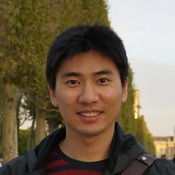Program Information
A New Deformable Image Registration Algorithm by Considering Deformation Discontinuity with L0-Norm Minimization and Levenberg-Marquardt Scheme
H Kim1,2*, D Ruan1 , B Cho2 , J Kwak2 ,K Sheng1 , (1) UCLA School of Medicine, Los Angeles, CA, (2) Asan Medical Center, Seoul
Presentations
SU-F-FS4-1 (Sunday, July 30, 2017) 2:05 PM - 3:00 PM Room: Four Seasons 4
Purpose: Existing deformable image registration (DIR) algorithms, including the free-from deformation, usually assumes over-simplified spatial deformation continuity, which can limit the DIR accuracy. This study presents a new DIR algorithm that estimates a more realistic deformation model by incorporating the sparse deformation discontinuity in L0-norm minimization.
Methods: The sparse presence of deformation jumps at locations such as tissue interfaces makes it desirable to design an DIR method with L0-norm minimization problem. We propose to solve the problem by decomposing deformation field into two parts: 1) implementing the free-form cubic B-spline for the continuous part, and 2) applying L0-/L1-norm minimization to the field to characterize sparse discontinuities. Technically, the algorithm requiring two simultaneous solutions were obtained using the alternating direction method of multipliers (ADMM) algorithm. The non-convexity from L0-norm was addressed with a specialized proximal operator, and non-linearity from non-parametric discontinuity was handled by a linearization with the Levenberg-Marquardt scheme, respectively. The performance of the proposed algorithm over MIM™ and B-spline algorithms was measured with the sum of squares/absolute difference (SSD/SAD), and the correlation coefficient (CC) between the fixed and deformed images for lung CT and abdominal MR images.
Results: The incorporation of the deformation discontinuity reduced the image discrepancy adjacent to the plural, and the intestinal boundaries in lung and abdomen cases. Numerically, the new DIR algorithms with L0-/L1-norm minimization lowered the SSD and SAD by 40 and 25 %, and raised the CC by 1-1.5% compared to the MIM and B-spline algorithms for two cases. When comparing the sparse L1-norm and L0-norm minimizations, the L0-norm based DIR algorithm further enhanced DIR accuracy quantitatively by about 5% decrease in SAD, and 0.15-0.2% increase in CC.
Conclusion: Our proposed DIR algorithm incorporating regularization for deformation discontinuities improved the DIR accuracy relative to the existing freeform DIR methods assuming continuous deformation.
Funding Support, Disclosures, and Conflict of Interest: DOE DE-SC0017057 NIH R44CA183390 NIH R01CA188300 NIH R43CA183390 NIH U19AI067769
Contact Email:
